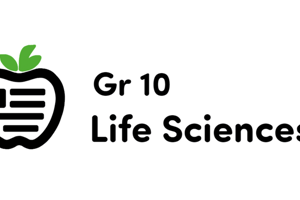Podcast
Questions and Answers
What are types of diagrams used to show comparative biological productivity for each level of the food chain?
What are types of diagrams used to show comparative biological productivity for each level of the food chain?
- Food chains (correct)
- Food webs (correct)
- Trophic pyramids (correct)
- Ecosystem maps
What is succession?
What is succession?
The replacement of one community by another, developing toward a climax.
What is a climax community?
What is a climax community?
A stable, mature community that undergoes little or no change in species over time.
What is an intermediate community?
What is an intermediate community?
What does extinction refer to?
What does extinction refer to?
What is natural selection?
What is natural selection?
What is stabilizing selection?
What is stabilizing selection?
What is disruptive selection?
What is disruptive selection?
What is directional selection?
What is directional selection?
What is artificial selection?
What is artificial selection?
What is a limiting factor?
What is a limiting factor?
What does biodiversity refer to?
What does biodiversity refer to?
What does a survival curve of type I organisms look like?
What does a survival curve of type I organisms look like?
What does a survival curve of type II organisms look like?
What does a survival curve of type II organisms look like?
What does a survival curve of type III organisms look like?
What does a survival curve of type III organisms look like?
What is a life table?
What is a life table?
What does population growth measure?
What does population growth measure?
What is the intrinsic rate of growth (r-max)?
What is the intrinsic rate of growth (r-max)?
What is exponential growth?
What is exponential growth?
What is logistic growth?
What is logistic growth?
What are factors that increase mortality rates?
What are factors that increase mortality rates?
What is the age of reproduction?
What is the age of reproduction?
What are r-selected organisms?
What are r-selected organisms?
What are K-selected organisms?
What are K-selected organisms?
What is geographic range?
What is geographic range?
What are cosmopolitan species?
What are cosmopolitan species?
What are endemic species?
What are endemic species?
What is active movement?
What is active movement?
What is passive movement?
What is passive movement?
What is seed dispersal?
What is seed dispersal?
What is seed dispersal by wind?
What is seed dispersal by wind?
What is seed dispersal by water?
What is seed dispersal by water?
What is seed dispersal by animals and insects?
What is seed dispersal by animals and insects?
What is seed dispersal by explosions?
What is seed dispersal by explosions?
What is seed dispersal by fire?
What is seed dispersal by fire?
What is an adaptive trait?
What is an adaptive trait?
What is acid rain?
What is acid rain?
Flashcards are hidden until you start studying
Study Notes
Types of Diagrams
- Trophic pyramids, food webs, and food chains visualize biological productivity across the food chain.
Succession
- Primary succession involves colonization of barren environments, leading to a climax community.
- Secondary succession occurs when an existing community is disturbed but soil nutrients remain, allowing regrowth.
Climax Community
- A stable, mature ecosystem that maintains species composition over time.
Intermediate Community
- Represents the stage prior to reaching a climax community.
Extinction
- The complete loss of a species, with no remaining living individuals.
Natural Selection
- A process where organisms with advantageous genetic traits survive and reproduce more effectively. Includes stabilizing, disruptive, and directional selection.
Stabilizing Selection
- A type of natural selection that reduces genetic diversity by favoring a specific trait across a population.
Disruptive Selection
- Favors extreme traits over intermediate ones, resulting in a bimodal distribution of traits.
Directional Selection
- Occurs when natural selection favors one extreme trait, shifting allele frequency in one direction.
Artificial Selection
- The process of breeding organisms for specific traits to produce offspring with those traits.
Limiting Factor
- Environmental constraints that can inhibit population growth, including resources, shelter, food, and disease.
Biodiversity
- The diversity of life forms in a particular biome or region, essential for ecosystem health.
Survival Curves
- Type I: Low juvenile mortality, high mortality in older age.
- Type II: Constant mortality rate throughout life.
- Type III: High juvenile mortality, low mortality in adulthood.
Life Table
- An age-specific summary that predicts survival patterns in populations, used to generate survival curves.
Population Growth
- Describes changes in population size, with humans exhibiting non-exponential growth.
Intrinsic Rate of Growth (r-max)
- The maximum growth rate of a population under ideal conditions.
Exponential Growth
- Characterized by a constant growth rate leading to a J-shaped growth curve.
Logistic Growth
- Involves a decreasing growth rate as the population approaches carrying capacity, resulting in an S-shaped curve.
Density-Dependent Factors
- Factors affecting mortality rates based on population density, including predation, competition, and disease.
Age of Reproduction
- The average age at which an organism can reproduce.
R-Selected Organisms
- Species that prioritize rapid growth and reproduction, typically in unstable environments, producing many offspring with low investment.
K-Selected Organisms
- Species that focus on stable growth and reproductive success, often found in stable environments near carrying capacity, investing more resources in fewer offspring.
Geographic Range
- The area where a species lives, feeds, and reproduces, subject to changes from species establishment or extinction.
Cosmopolitan Species
- Species with a distribution spanning multiple continents.
Endemic Species
- Species confined to a specific, small area on a single continent.
Movement Types
- Active Movement: Involves the organism using its appendages (e.g., walking, flying).
- Passive Movement: Relies on external forces for movement (e.g., wind, water).
Seed Dispersal
- A passive movement strategy that aids plant survival by reducing competition, implemented through various methods:
- Wind: Light seeds that can be carried over distances.
- Water: Fruits that float and can travel vast distances.
- Animals/Insects: Fruits are consumed, and seeds are excreted at new locations.
- Explosions/Tensions: Pods that burst and eject seeds.
- Fire: Certain plants adapt to fire, using the heat to trigger seed dispersal.
Adaptive Trait
- A characteristic that enhances an organism's ability to survive and reproduce in its environment.
Acid Rain
- Precipitation that contains acidic components, resulting from pollution and adversely affecting ecosystems.
Studying That Suits You
Use AI to generate personalized quizzes and flashcards to suit your learning preferences.





